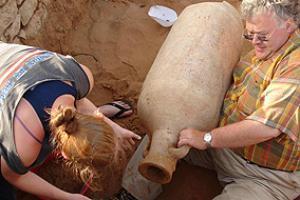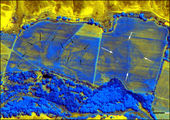University of British Columbia archaeologists have dug up a mystery worthy of Indiana Jones, one that includes a tomb, skeletons and burial rites with both Christian and pagan elements.
This summer, Prof. Roger Wilson led excavations at Kaukana, an ancient Roman village located near Punta Secca, a small town in the south-eastern province of Ragusa in Sicily.

© Roger WilsonArcheologist Roger Wilson pulls out the clay amphora from its 1,500 year hiding place.
Combing through the sand-buried site, the 15-member team made a series of startling discoveries. Central to the mystery was finding a tomb inside a room in a house dating from the sixth century AD.
Wilson explains that tombs during this period are normally found only in cemeteries outside the built-up area of a town, or around the apse of a church. And since the building was substantial with mortared walls and internal plaster, this would have been likely a tomb for the wealthy.


Comment: Ah, so reassuring all this talk about asteroids coming once every 100,000 years. But what about comets?
To get an idea of the real danger facing us, check out the series on comets listed on the sidebar to the left. Don't be fooled by ignorant or lying dupes of the pathocracy.